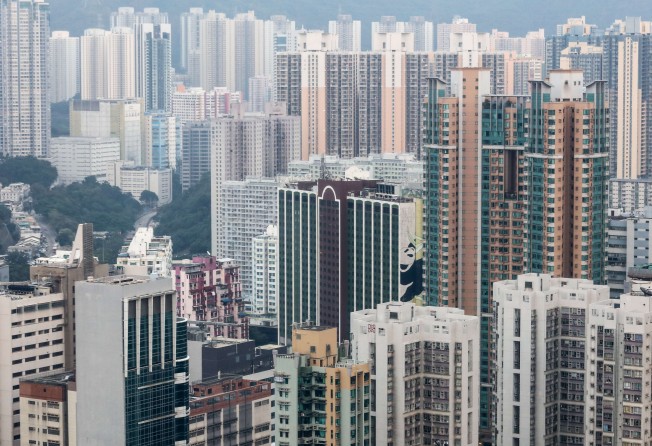Hong Kong development chiefs eye sites for over 10,000 flats as they struggle to hit housing target
But some of the plots in the New Territories are close to slopes and still leave government facing shortfall by 2027

More than a dozen sites in the New Territories – enough to build over 10,000 flats post-2019 – have been identified by the city’s development authority in the hope of meeting its ambitious housing target, a government source said.
Most of the sites, currently zoned as green belts or for government, institution or community use, are in Ma On Shan and Tseung Kwan O, with the rest scattered in Fanling, Yuen Long, Tai Po and Tuen Mun.
“The sites that we have managed to find this time around are considered to be quite large, but are close to slopes,” the source said, revealing details expected to be announced in Chief Executive Leung Chun-ying’s final policy address next week.
“There might be some difficulties in terms of construction that we would have to solve in that respect.”
The source did not indicate whether the land would be for public or private housing but said some sites were as large as one hectare.
Hong Kong’s unabating housing shortage has put pressure on authorities to find enough land to meet its target of building 460,000 flats by 2027. But the government admitted last month that the city faced a shortfall of 44,000 public flats by then.
The difficulty in finding suitable land has been coupled with public opposition to rezoning land to use for housing.
So far the government has only rezoned a third of 150 sites previously identified for flats to be sold on the market between 2014 and 2019 – a pace far slower than what authorities had anticipated.
Professor Chau Kwong-wing, head of the University of Hong Kong’s department of real estate and construction, said rezoning would continue to be “the biggest challenge”.
“It’s not a technical issue, but a political one. It’s about how [well] the government can manage to convince the public,” he said.
Chau said it was likely that the land in New Territories would be more suitable for public housing or subsidised flats, as less valuable land in the area meant the government would have a lower opportunity cost.
District councillors in Ma On Shan and Tseung Kwan O welcomed the proposal to build more housing but were concerned about whether the transportation and infrastructure would be able to support the influx of residents.
District councillor Lai Ming-chak said: “We’re already quite at our limit. The capacity at Tseung Kwan O MTR station is already at 101 per cent during rush hour. The MTR has promised to increase the frequency of trains by 2020, but that will only solve our current demand.”
Ma On Shan district councillor Alvin Lee Chi-wing estimated the neighbourhood could accommodate 20,000 more residents than its current 230,000 by then.
“We have the space, but if there are not enough community facilities or proper transport infrastructure, the public would definitely oppose it,” Lee said.